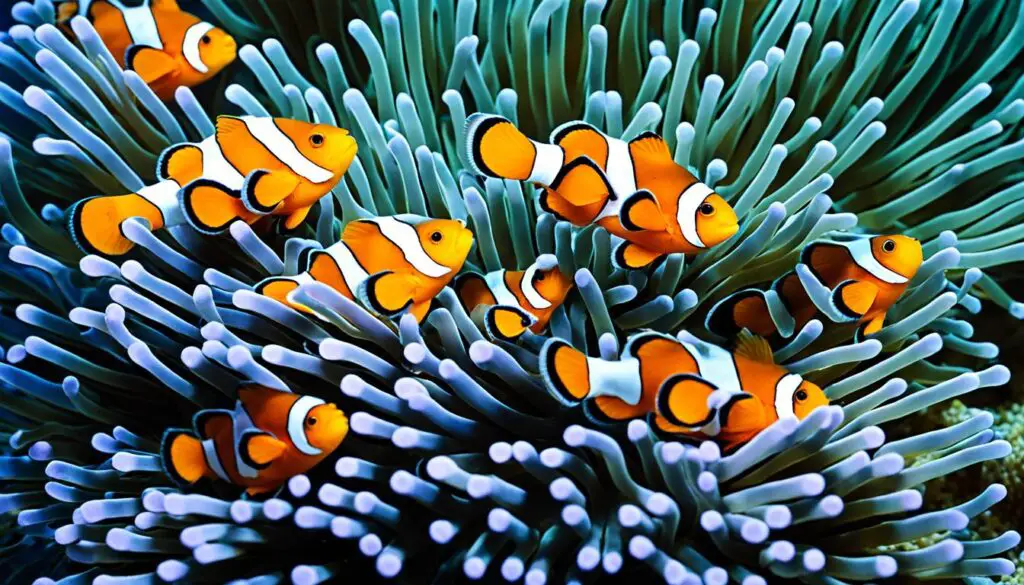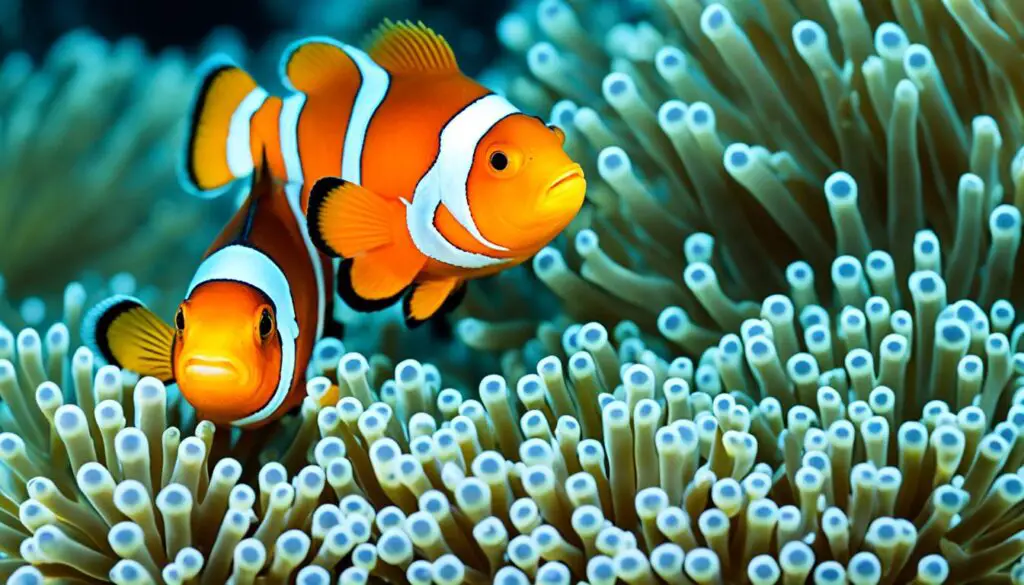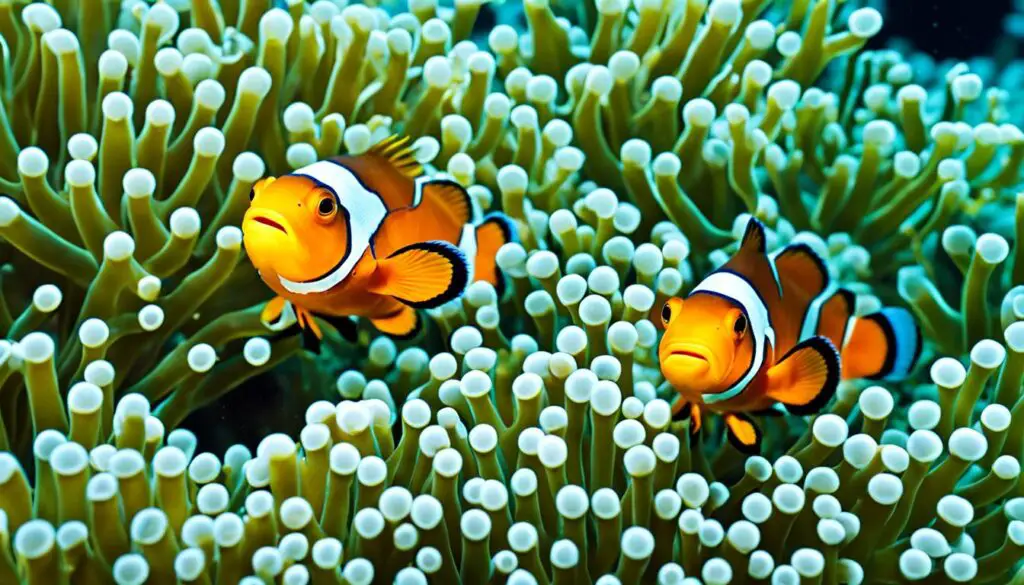Kickstart Your Clownfish Tank with Proper Cycling Techniques
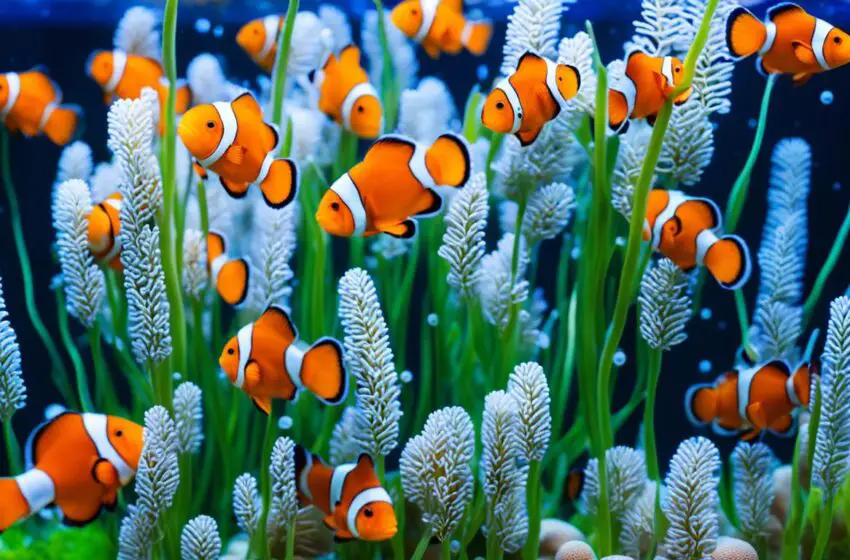
Aquarium cycling is key for a healthy saltwater tank, especially for clownfish and marine life. This process keeps dangerous substances like ammonia in check. It ensures your underwater friends live in a safe place.
Beneficial bacteria are critical during cycling. They change harmful things into safer nitrates. This is called nitrogen cycling and it’s nature’s way of cleaning the water.
Starting the cycling can be done a few ways. You can introduce beneficial bacteria with live rock or sand. Or you can use a bacteria product. Just make sure there’s ammonia for the bacteria to eat. You can do this using your first fish or an ammonia solution.
It takes time for the cycling to complete, usually a few weeks. Keep testing for ammonia. Only add more fish when it’s safe and stable for them.
Cycling is critical for your clownfish and tank’s health. With the right methods and patience, you can have a tank that feels like home to your marine friends.
Key Takeaways:
- Aquarium cycling is crucial for a health tank.
- Beneficial bacteria help keep the water safe for fish.
- Seed your tank with bacteria using live rock or sand, or a bacteria product.
- Give the bacteria ammonia to eat, like using your first fish or an ammonia solution.
- Be patient, as the cycling process can take several weeks.
Understanding Different Methods of Aquarium Cycling
There are several ways to cycle your aquarium, depending on what you like and how your setup is. We’ll explore a few of these ways:
Dry Rock Method
Dry rock is a common choice for aquarium cycling. It is like other substrates, offering a place for good bacteria to live. You just put the dry rock in your tank and wait for the bacteria to grow over time.
Bottled Bacteria Method
For a faster process, you can try bottled bacteria products. These contain helpful bacteria that you can add to your tank. They speed up the cycling process.
Ammonia Source
No matter the method, you must add an ammonia source to feed the bacteria. You can use ammonium chloride or old food. This helps the good bacteria grow in your tank.
Oxygenation
During cycling, the bacteria need oxygen to thrive. Using a powerhead or airstone is a good idea. This ensures there’s enough oxygen for them, creating a healthy environment.
Cycling with dry rock may take longer than live rock. Your tank might look bad for a while, needing more care. But, with time and checking on it often, you will cycle your tank well.
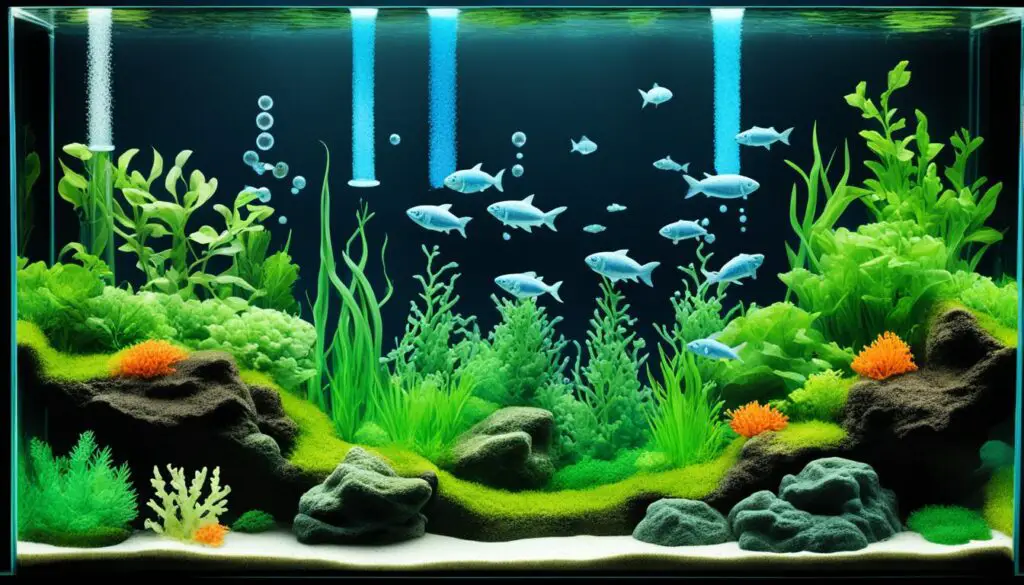
Now, you have learned about different cycling methods. Pick the one that works best for you. Remember, being patient and creating a good environment for the bacteria is key. They are essential for a healthy aquarium.
Tips for a Successful Cycling Process and Conclusion
Understanding why cycling your aquarium is key, let’s discuss tips for success. Start the cycle by adding beneficial nitrifying bacteria to your tank. You can do this with live rock, substrate, or old tank rubble. Live rock not only looks good but also naturally brings in these bacteria. This creates a perfect setting for your fish.
Keep an eye on the ammonia and nitrite levels during cycling. Test the water until these levels drop to zero. This shows the cycle is over. The process might take a few weeks, so be patient. Moving too fast can harm your tank’s health.
After cycling, when everything is stable, think about adding fish. But, go slowly and choose safe livestock at first. This lets the tank adjust to handling the fish waste. Then, you can add more fish as the tank gets used to it.
These steps help you get your aquarium going with the right bacteria. This makes a good home for your fish, like clownfish. Use aquascaping, be patient, and add fish safely. This keeps your tank healthy and your fish happy.
FAQ
What is aquarium cycling?
Aquarium cycling is a way to grow good bacteria in your saltwater tank. These bacteria help keep harmful stuff like ammonia in check.
How can I start the cycling process?
To begin, add bacteria to your tank with live rock, sand, or a liquid product. Then, feed the bacteria with an ammonia source.
How long does the cycling process take?
Cycling usually takes a few weeks for the ammonia to reduce. Be patient and wait before introducing more fish or animals.
What are the different methods of aquarium cycling?
You can cycle your tank with dry rock, bottled bacteria, and ammonia sources like ammonium chloride or fish food.
How can I introduce beneficial nitrifying bacteria to my tank?
Use live rock, substrate, or rubble from another tank. Aquascaping with live rock is a natural way to introduce these bacteria.
How should I monitor the cycling process?
Check ammonia and nitrite levels often during cycling. They should eventually reach zero, showing the cycle is complete and safe for fish.
When can I start adding fish to my tank?
After cycling, wait until the tank’s conditions are steady. Then, add fish slowly to let the biofilter adjust to their waste.
What are some tips for a successful cycling process?
For a smooth cycle, be patient and use good bacteria. Also, start with safe fish and arrange your tank with live rock.

